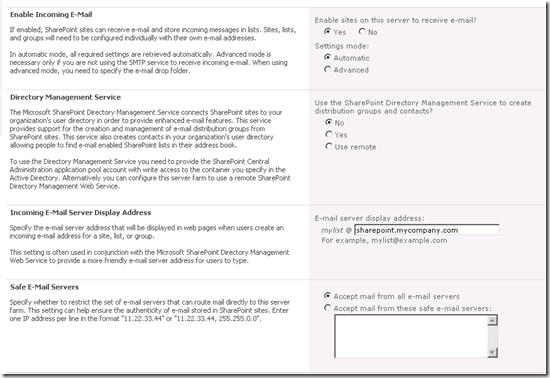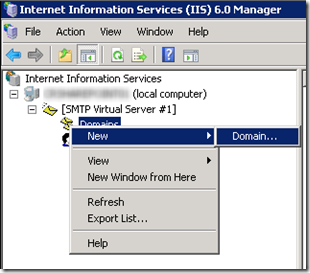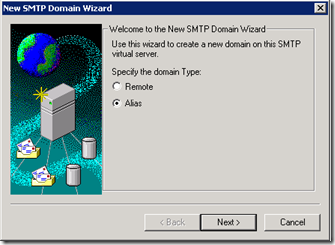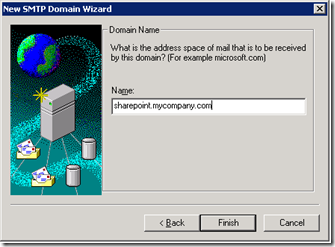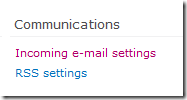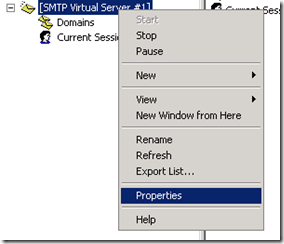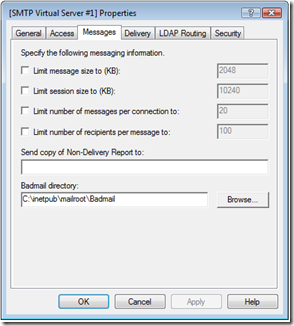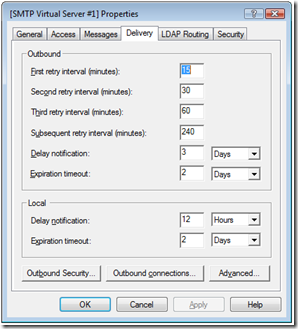Contents tagged with SMTP
-
Configuring Incoming Email for SharePoint 2010 Foundations
SharePoint sites can receive email and store incoming messages in lists. This allows a user to send an email to a particular email address and have the contents of the email show up in a SharePoint list. You can also email enable a calendar in SharePoint 2010 Foundations and then connect that calendar to Outlook to create a shared calendar for all of your users. Below are instructions on how to enable incoming email in SharePoint 2010 Foundations.
There are three places you will need to modify to get incoming email to show up in SharePoint lists and calendars. The first is in the SharePoint Central Administration, the second is within the IIS 6.0 Manager (for the SMTP settings), and the third is enabling it in the list itself.
Step 1 - SharePoint Central Administration
Go to SharePoint Central Administration on your SharePoint server and then browse to System Settings > Configure incoming e-mail settings:
Within the Configure incoming e-mail settings page you will need to select the “enable sites on this server to receive e-mail” option and then set the domain name of the e-mail server:
Step 2 - IIS 6.0 Manager for SMTP configuration
You will now use the IIS 6.0 Manager to add the domain name you are using to send mail to the email enabled lists to this server (so that it will accept email to this domain name).
Go to Administrative Tools > Internet Information Services (IIS) 6.0 Manager
In the IIS6 MMC expand the local server and then expand the SMTP Virtual Server. You now need to add the domain name specified in the Central Admin configuration settings to the domains that will receive email on this SMTP Server.
Right click Domains and then choose New > Domain…
Choose the Alias option and then click Next
Then add the domain name where users will send email as an alias for the SMTP server. Note: Of course make sure the DNS MX records are set to point this domain name to the IP address of this server. Note2: Also make sure port 25 is open to your server so it can receive email.
Step 3 – Enabling incoming email in the SharePoint list
The final step is to enable incoming email on the lists that you want to accept email and also specify an email address for the list.
To do this, browse to the List Settings of the List:
Then on the right-hand side will be the Communications section with the Incoming e-mail settings link.
Click this link to bring up the Incoming E-mail Settings dialog for this list. Choose Yes to enable the list to receive email and then enter an email address for this list. (There are also other options to set to control what content from the email is added to the list and the permissions.) Click OK to save your settings.
Now you can send an email to this list email address (in the example above it would be mylist@sharepoint.mycompany.com) and the contents of the email will be automatically added to the discussion list.
Technorati Tags: Configuring Incoming Email for SharePoint 2010 Foundations -
How to send email when port 25 is blocked
I run Windows Server 2008 as my development environment and use the local SMTP service to send emails for any website or application that I am developing and that needs to send email. Recently I was working on a Billing Application that needed to send emails and I wanted to send several to myself for testing, but for some reason the emails were not being sent.
I followed this article from Scott Forsyth about how to debug smtp issues. After connecting using Telnet and manually sending a message, I saw the email message sitting there in my queue (C:\inetpub\mailroot\Queue) and not going out.
Next I checked the event log and found this message (I was sending to a gmail account for testing):
Message delivery to the host 'XXX.XX.XXX.XX' failed while delivering to the remote domain 'gmail.com' for the following reason: The remote server did not respond to a connection attempt.
This indicated that my local smtp server was not able to connect to gmail’s mail server. I use Verizon Residential DSL as my Internet Service Provider (ISP). Some time in 2009, Verizon Residential DSL began blocking port 25. This caused my local development machine SMTP server to not be able to send email.
An easy workaround that I found was to send using my Verizon DSL email account. To do this you need to specify port 587 and also your credentials for your Verizon account:
System.Net.Mail.SmtpClient smtpClient = null;
smtpClient = new System.Net.Mail.SmtpClient("outgoing.verizon.net", 587);
smtpClient.Credentials = new System.Net.NetworkCredential("account@verizon.net", "password");
smtpClient.Send(m);
Verizon lets you create multiple email accounts so it was easy to create a secondary account just for me to send through instead of using my primary account.
Technorati Tags: Verizon Residential DSL,Smtp Client -
Windows Server 2008 IIS7 SMTP properties
In Windows Server 2003 IIS6 you were able to change SMTP properties from within Internet Information Services (IIS) Manager. In Windows Server 2008 the IIS7 Manager does not handle SMTP anymore... but you can modify it by using the old IIS6 Manager which is provided as part of the Windows Server 2008 Administrative Tools.
Under Administration Tools you will now find two different IIS Manager entries. One for IIS7 and one for IIS6. Choose the IIS6 Manager to change the SMTP properties.
The IIS6 Manager will only have an item for the SMTP Virtual Server. Right-click on the SMTP Virtual Server and select properties.
This will display the familiar SMTP Properties dialog that you are used to from Windows Server 2003. Now you will be able to change things such as the size limit of the messages, the number of messages per connection, outbound delivery delay notifications, etc.
